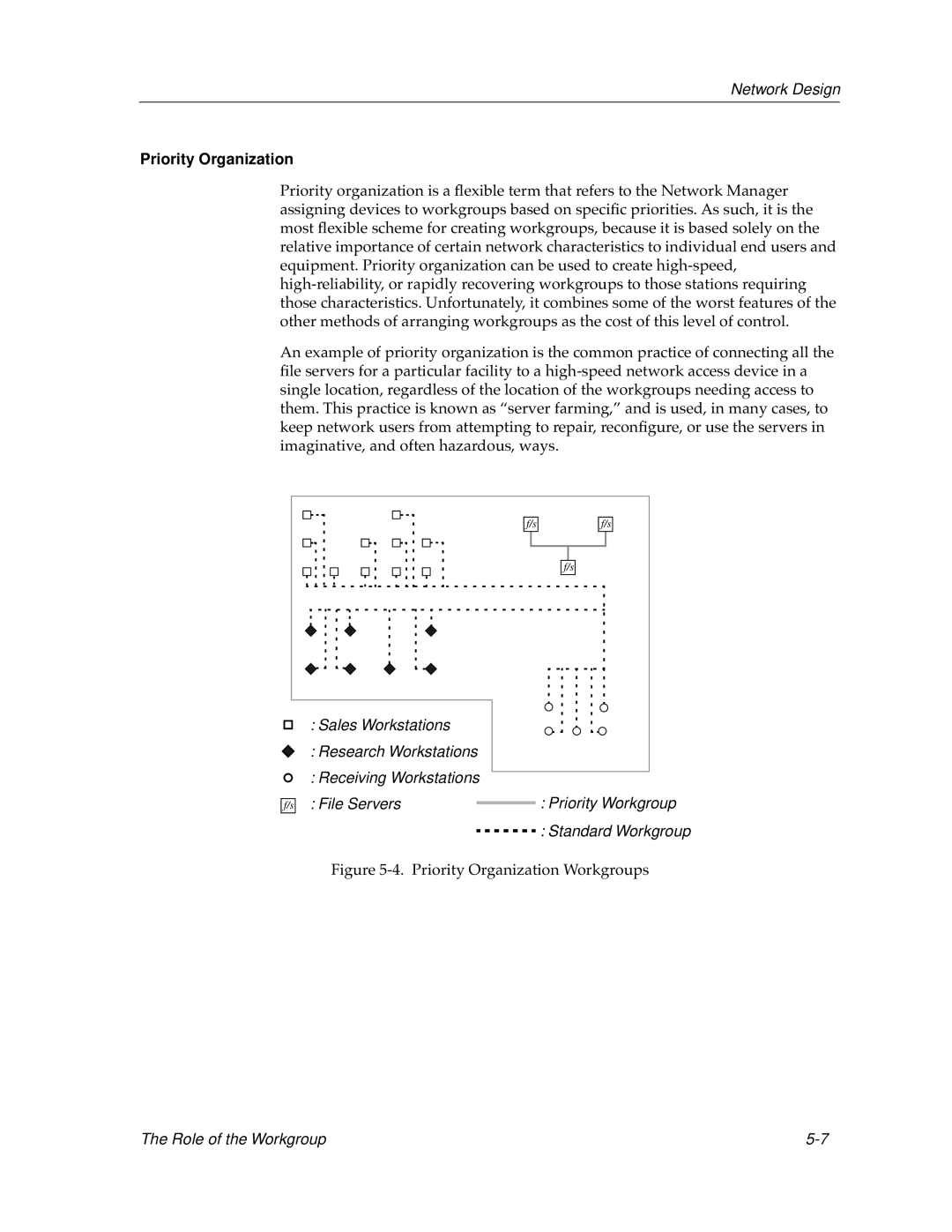
Network Design
Priority Organization
Priority organization is a flexible term that refers to the Network Manager assigning devices to workgroups based on specific priorities. As such, it is the most flexible scheme for creating workgroups, because it is based solely on the relative importance of certain network characteristics to individual end users and equipment. Priority organization can be used to create
An example of priority organization is the common practice of connecting all the file servers for a particular facility to a
f/s | f/s |
| f/s |
f/s
:Sales Workstations
:Research Workstations
:Receiving Workstations
: File Servers |
| : Priority Workgroup |
|
![]()
![]() : Standard Workgroup
: Standard Workgroup
Figure 5-4. Priority Organization Workgroups
The Role of the Workgroup |
